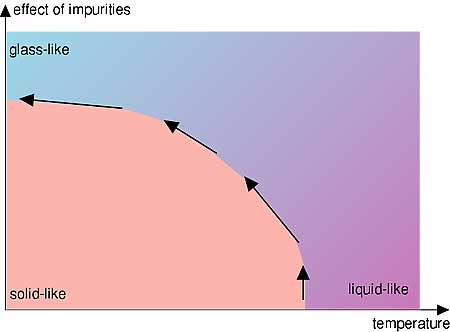When heated, usual matter becomes liquid which is soft and disordered, while it becomes a hard and ordered crystal when it is cooled. However, there are some eccentric material such as liquid crystal which is "ordered and soft", or glass which is "disordered and hard". The behavior of these kinds of materials is one of the most interesting subjects in contemporary physics. A snapshot of atoms in glass would just look like a disordered liquid, but the atoms are frozen to disordered positions and do not move along, unlike in a liquid. Recently, similar behavior had been found in some kind of magnets: they are referred to as "spin glasses" and are vigorously studied. In a conventional magnet, at high temperature, spins of each electron point in random directions and fluctuate as in a liquid, while at low temperature each spin aligns to one direction and is frozen as in a solid, resulting in non-zero magnetic moment. But in spin glasses, when cooled, spins are frozen to (seemingly) random configurations owing to impurities and irradiation defects. In such a state, there is no magnetic moment but it exhibits unique physical behavior that is considerably different from non-magnets.
The "random field Ising model" is a kind of model which reproduces the unique behavior of such materials. In the present study, large-scale numerical simulation of this model has revealed that the behavior of the spins continuously changes from liquid-like to glass-like, depending on the temperature and the effects of impurities. It is also found that the phase transition into the solid-like ordered state is always reduced to the solid-glass transition at zero-temperature (Fig. 10-1). Numerical simulations of "glass-like" models are known to be very difficult; we have employed a method called the "temperature exchange method" and large-scale parallel computation, which enabled efficient simulations to overcome the difficulty. |

